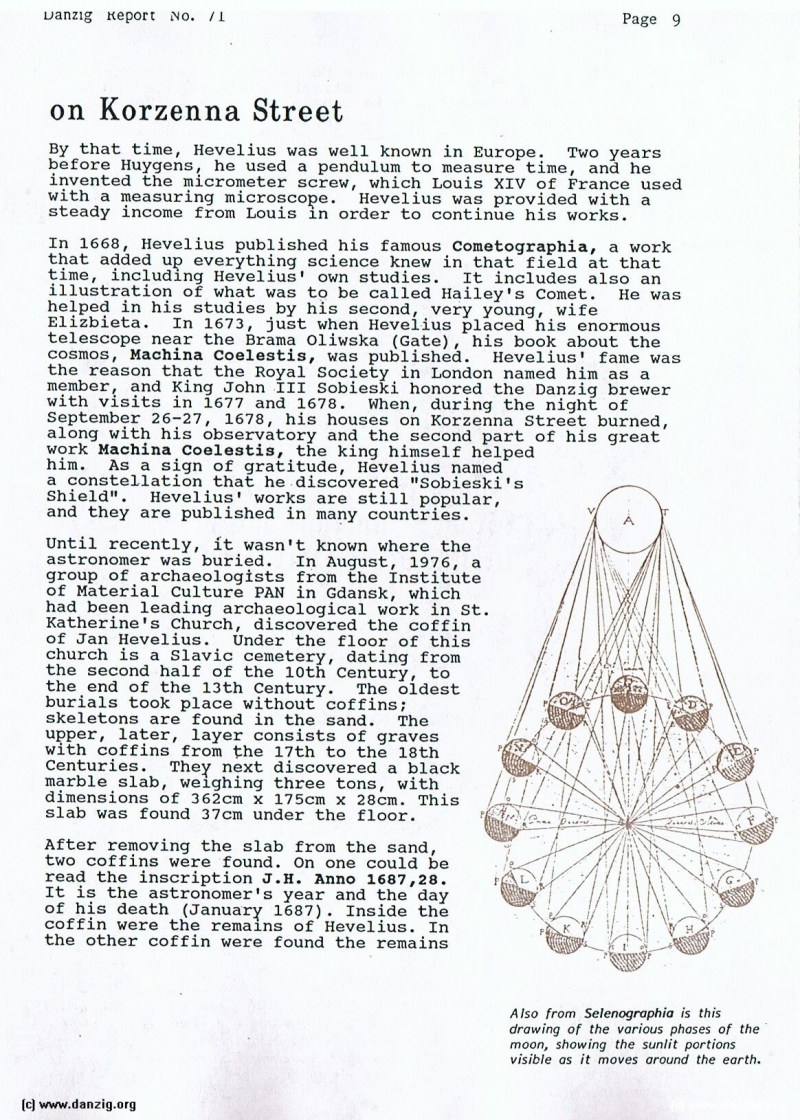
>Its Closer to the Stars on Korzenn Street
By that time, Hevelius was well known in Europe. Two years before Huygens, he used a pendulum to measure time, and he invented the micrometer screw, which Louis XIV of France used with a measuring microscope. Hevelius was provided with a steady income from Louis in order to continue his works.
In 1668, Hevelius published his famous Cometographia, a work that added up everything science knew in that field at that time, including Hevelius’ own studies. It includes also an illustration of what was to be called Hailey’s Comet. He was helped in his studies by his second, very young, wife Elizbieta. In 1673, just when Hevelius placed his enormous telescope near the Braina Oliwska (Gate), his book about the cosmos, Machina Coelestis, was published. Hevelius’ fame was the reason that the Royal Society in London named him as a member, and King John III Sobieski honored the Danzig brewer with visits in 1677 and 1678. When, during the night of September 26-27, 1678, his houses on Korzenna Street burned, along with his observatory and the second part of his great work Machina Coelestis, the king himself helped him. As a sign of gratitude, Hevelius named a constellation that he discovered “Sobieski’s Shield”. Hevelius’ works are still popular, and they are published in many countries.
Until recently, it wasn’t known where the astronomer was buried. In August, 1976, a group of archaeologists from the Institute of Material Culture PAN in Gdansk, which had been leading archaeological work in St. Katherine’s Church, discovered the coffin of Jan Hevelius. Under the floor of this church is a Slavic cemetery, dating from the second half of the 10th Century, to the end of the 13th Century. The oldest burials took place without coffins; skeletons are found in the sand. The upper, later, layer consists of graves with coffins from the 17th to the 18th Centuries. They next discovered a black marble slab, weighing three tons, with dimensions of 362cm x 175cm x 28cm. This slab was found 37cm under the floor.
After removing the slab from the sand, two coffins were found. On one could be read the inscription J.H. Anno 1687,28. It is the astronomer’s year and the day of his death (January 1687). Inside the coffin were the remains of Hevelius. In the other coffin were found the remains
Also from Selenogrophia is this drawing of the various phases of the moon, showing the sunlit portions visible as it moves around the earth.
Danzig Report Vol. 1 - Nr. 71 - April - May - June - 1991, Page 9.
Hits: 3152
Added: 30/06/2015
Copyright: 2024 Danzig.org

